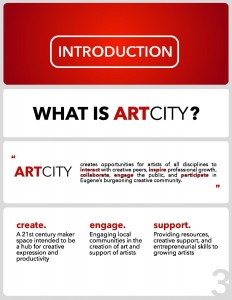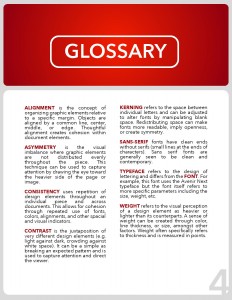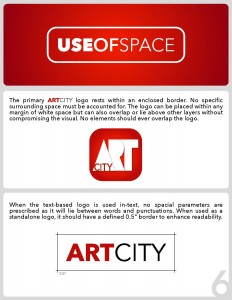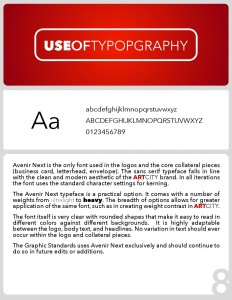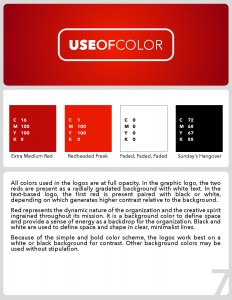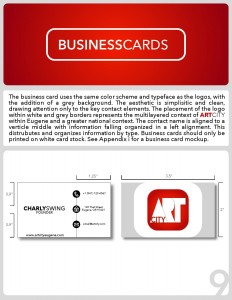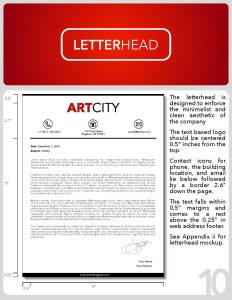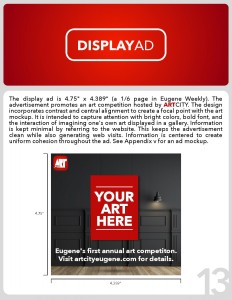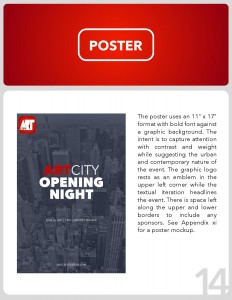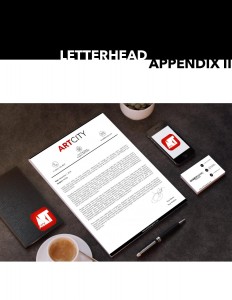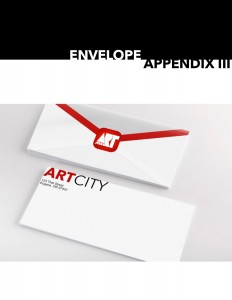- Develop a working understanding of the most commonly accepted marketing practices and a framework with which to evaluate them in different contexts.
- This was quite easily satisfied. I think I’ve gained a general understanding of various marketing strategies, at least at an introductory level and I feel comfortable evaluating their relative merits both in practice an in theory.
- Gain a better understanding of ethical concerns in communications and marketing, especially regarding problems/benefits of the sale of data and implications of anonymity breaches
- This isn’t something we touched on. It is perhaps outside of the realm of this class. We worked with pretty traditional strategies in terms of data. Seth’s presentation touched on various evaluative measures and consumer qualifiers but to a pretty small extent.
- Understanding the nature of desensitization toward advertising/marketing strategies in increasingly ad-saturated physical and digital spaces
- We didn’t really address this either although it is clear how certain strategies, like guerrilla marketing, can break through barriers of desensitization.
- Learning what techniques can be used to implicitly manipulate potential customers – psychology of marketing strategies
- This is something Seth discusses in his conversation around profiling consumers to advertise not only to their identities, but to who they want to project themselves to be.
- Understand the role of big-data in marketing and it’s potential for future applications
- This wasn’t really touched on. Seth discussed data in a small-scale realm. We didn’t quite touch on any implications or possibilities for large cultural institutions to use big data as corporations are.
- Learn creative ways to circumvent restrictive marketing budgets most effectively
- This came through in practice as we worked to develop marketing strategies for OSLP. We were very aware of their budget restrictions and had to manipulate our resources to the best of our abilities.
Category Archives: aad616_f16
Viral Marketing in the Culinary Arts
“Viral marketing campaigns catalyzed by food publicity stunts are prevalent throughout the culinary arts and the restaurant industry. The strategy is seen across the spectrum from the higher echelons of exclusive fine dining to the more accessible realm of fast food empires. Stunt marketing captures user interest through absurdity – be this in the context of bizarre foods or bizarre promotion surrounding the food. This paper considers its strengths and weaknesses through theory and specific case studies.”
[embeddoc url=”https://blogs.uoregon.edu/vlee/files/2017/02/lexicons-1n0ks78.pdf” download=”all” viewer=”google”]
[embeddoc url=”https://blogs.uoregon.edu/vlee/files/2017/02/Stunt-food-1n6hvib.pdf” download=”all” viewer=”google”]
Media Map
Learning Goals
- Develop a working understanding of the most commonly accepted marketing practices and a framework with which to evaluate them in different contexts.
- Gain a better understanding of ethical concerns in communications and marketing, especially regarding problems/benefits of the sale of data and implications of anonymity breaches
- Understanding the nature of desensitization toward advertising/marketing strategies in increasingly ad-saturated physical and digital spaces
- Learning what techniques can be used to implicitly manipulate potential customers – psychology of marketing strategies
- Understand the role of big-data in marketing and it’s potential for future applications
- Learn creative ways to circumvent restrictive marketing budgets most effectively
Learning Objectives Reflection
This post relates directly to my initial learning objectives for this class.
Through practice with the graphic standards, I think I’ve been able to foster a better understanding of how design elements affect the overall aesthetic and perception. I’ve been able to experiment and see from my peers’ work that small changes in factors like line weight lend significantly to the overall composition.
I don’t feel that I have a better understanding of how design affects human psychology in theory but it’s something I have become more aware of through this class.
I don’t think I’ve learned how marketing for arts organizations differs to that of other organizations, outside of the idea that they are trying to convey a different mission. This is true for all sectors.
I think I’ve developed a much stronger understanding of raster and vector graphics. I’ve gained a stronger familiarity with Illustrator and have become familiar with a new software, Affinity Designer. I feel much better equipped to work with vector graphics software in the future.
I wish I had engaged more in the theory of media and communications. I think my learning has leaned heavily on the technical side. I don’t recognize a growth in knowledge pertaining to ethical considerations in communications or the communicative nuances between various media types.
Lexicon 8
KERNING
Adjusting the distance between individual letters in a font, not to all of the letters as a whole. The ability to adjust small details like letter spacing allows for maximized control over distribution of space within a piece.
EMPHASIS
Emphasis is the use of create an aspect of visual prominence, perhaps similar to a focal point. By creating an area of emphasis, whether it is in terms of the design or as a means to highlight important information, the creator is able to attract user attention to the intended point.
DESCENDER
A descender is the part of a letter than extends below its baseline, such as the tail in “y.”
VISUAL IMPACT
Visual impact is a marker of immediate affect a piece has on the viewer. This is the emotional response, both initial and extending into the future. Impact can be positive or negative but cannot be neutral.
CONSTRAINTS
When working for a client, a number of constraints can affect the outcome. These include deadlines, client opinions, company standards/style guides, budget, and available software.
Lexicon 7

INTELLECTUAL PROPERTY
Intellectual property formally credits and protects the creator of outputs of the mind such as writings or conceptual inventions. A logo design would fall under this category. Ownership means others cannot steal the concept or use it for their own benefit. Proceeds and reference tie directly back to the originator. The concept is extremely important in economics as a means of behavioral incentivization. Protection encourages innovation and creation by guaranteeing benefit only to the owner.
MINIMALIST
Minimalism is the concept of eschewing what is not absolutely necessary. In the context of visual design, this means reducing the project to its most essential elements. A mainstream, contemporary example of minimalist aesthetics can be seen with Apple.
TRANSMEDIA
Transmedia refers to communications or narratives that occur across multiple media platforms. By engaging audiences on a number of intellectual modalities, participants are able to engage in the narrative to a greater extent. This is a useful tool in education as well. For example, telling a history narrative with a digital gaming component may be more memorable and interesting to students than the sole medium of a published boo. When people can interact with a project in multiple ways (reading the story, making choices in a game, seeing a graphic representation) they are more likely to retain.
BUCKLEY
Woof, woof. Good boy.
Poster/Display Ad
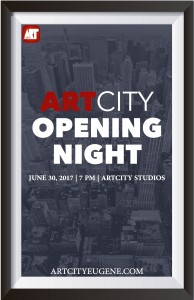

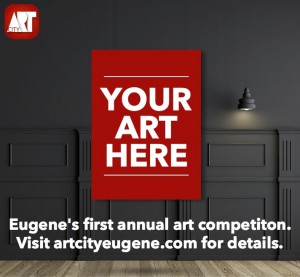
ArtCity Case Study & SWOC Analysis
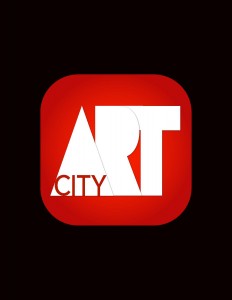 ARTCITY
ARTCITY
A Case Study and SWOC Analysis
Victoria Lee | Arts Marketing, Media, and Communications | Fall 2016
ArtCity is an art-driven and artist-serving startup in Eugene, Oregon. The organization seeks to generate “opportunities for artists of all disciplines to interact with creative peers, inspire professional growth, collaborate, engage the public, and participate in Eugene’s burgeoning creative community.” (ArtCity, 2016). The project was initiated in early 2016 by founder and local artist, Charly Swing. The organization is currently in its initial development phases. Some of what follows is based on expectations as large facets of the company (participant base, location, service) have yet to be fully developed. Expectations are grounded in assessing the current state of ArtCity and Swing’s vision its future.
ECONOMIC SCAN
Economic factors affecting an organization are numerous and form complex webs of interrelations. Here, these are broken down into several broad, primary categories. The economic scan considers income (earned, contributed, and government); present financial state, as there is no past to consider; and the general economic climate for arts organizations.
ArtCity currently has no significant source of income as the organization mostly exists within a state of ideation. Early-stage event programming consisting of “Drink & Draws” have been hosted, which encompass the entirety of earned income sources. Funds are raised by participant donation. Donations are also accepted through an online portal. Contributed, or in-kind, income makes up the largest portion of ArtCity’s resources. For example, space and art supplies for the Drink & Draw events were donated to the organization while marketing and branding development is being obtained through University of Oregon graduate student input. At this time, there is no source of government funding.
Following from the general overview of income sources, ArtCity does not have a notable present financial state. As far is what is apparent, costs and revenue exist essentially only nominally. There is no location, professional staff, marketing strategy, or programming to constitute expenditure and, similarly, no products or services to generate funds.
The general economic landscape for arts remains characterized by underfunding. The federal government has developed a notorious reputation for allocating only a small portion of non-defense spending to arts agencies, the groups that would likely fund a project like ArtCity. A 2016 study from Americans for the Arts reports that federal funding has fallen $19.5 million dollars to $148 million ($0.46 per capita) in the past six years. State funding has similarly decreased by $101.2 million over a 15 year period. In contrast, funding to local arts agencies has shown a consecutive five years of increase, rising $57.1 million in just the past year. This could mean both good and bad news for ArtCity. As a small startup, initial support is likely to come from the community and local arts agencies. However, as an organization with a vision for national expansion, the focus on only local agencies may prove problematic down the line.
DEMOGRAPHIC SCAN
The demographics of the greater Eugene area play a large role in defining ArtCity’s context. According to the United States Census Bureau (2015), Lane County is home to approximately 363,000 people, roughly half of which are female. The largest racial demographic is, by far, Caucasian (89.8%). 91.1% of the population has a high school degree with 28.2% having a bachelor’s or higher. The per capita income is quite low at only $24,720 with 18.4% of the population living in poverty.
Income might perhaps be the greatest demographic influence. For a membership fee ArtCity offers space and services that may be seen as essential. The organization targets artists who need help in reaching professional status. As such, this target audience is not likely to have a large disposable income as they aren’t in developed careers. Because Lane County already has such a low per capita income and artists, outside of architects, are often among the lowest paid in the U.S. workforce, ArtCity might struggle in reaching their demographic.
In a 2015 National Endowment for the Arts (2015) study, Oregon saw a higher level of arts participation in all fields considered the national average (see Table 1). Perhaps most significantly, Oregon had the third highest rate of adults actively engaged in creating artworks, only falling short to neighboring states, Washington and Idaho. This suggests that there may be a suitable economic base for ArtCity given its physical context.
Because the organization is new, there is no information regarding user demographics. Swing seeks to fill a gap in resources between those offered in art school and a lack thereof as artists enter the professional world. If intent matches actual function, participants are likely to be of 25+ age. According to the NEA (Vartanian, 2011), artists are most likely to be domestic and caucasian, which matches the composition of Lane County.
TABLE 1: Arts Participation in Oregon
|
Type of Art Engagement |
Oregon Rate of Participation (%) |
National Average Rate of Participation (%) |
|
Attend Visual, Performing Arts, or Movie Events |
73.3 |
66.2 |
|
Attend Live Music, Theater, or Dance Performances |
36.3 |
31.6 |
|
Attend Art Exhibits |
27.2 |
18.7 |
|
Go to Movies |
64.6 |
58.4 |
2
|
Visit Buildings, Neighborhoods, Parks, or other Sites for Historic/Design Value |
36.6 |
27.4 |
|
Read Literature |
59.5 |
43.1 |
|
Personally Perform or Create Artworks |
59.9 |
45.1 |
State by State Estimates of Art Participation Rates (2012-2015) – arts.gov
CULTURAL SCAN
The general culture of the Board is collaborative. Because the organization is so new, the group of starting employees often wear many hats. They work on the basis of joint partnership and support throughout the organization, coming together to develop new programming and strategies.
The culture of the surrounding area is generally seen as arts-forward. Eugene is home to a thriving university community and many galleries, theaters, concert halls, independent artists, etc. As such, they are at the heart of a society that already has the framework in place to lend a participatory aspect to ArtCity. The organization also addresses a widespread cultural need of support for artists. In a time of decreasing funding and resources, ArtCity taps into a cultural landscape that is lacking in support. In this sense, they have the potential to be quite culturally relevant.
As a potential cultural detriment, arts participation in the U.S. does not occupy a significant portion of the nation’s time. In 2013, arts only contributed $40 million1 of the $2.5 trillion entertainment and leisure market. Arts are losing user-time to digital interfaces and consumer activities including electronics, television, social media, and video streaming (RKMA, 2016). ArtCity does not yet seem to be doing much to integrate the trend toward the digital. Their projected program base is largely analog involving the traditional arts and workshops. While Eugene may have a higher ratio of traditional artists than some other small cities, a company that is not tech-forward is in opposition to large-scale cultural trends.
The nonprofit arts sector contributes a greater sum but this is not considered part of the cultural context as ArtCity is a for-profit initiative.
SWOC ANALYSIS
|
Strengths |
Weaknesses |
Opportunities |
Challenges |
|
|
Cultural Products |
– Developing a community of creativity, collaboration, and culture – Addressing a need for shared workspace and professional development |
– May not be applicable to all audiences – Lack of community engagement -Merging an artisan culture with “fine art” |
– Creating a new artistic identity in Eugene |
– Making products accessible to a broad base of the community – Making products relevant in an area with other access to the arts |
|
Pricing |
– The only program thus far has been donation based (accessible to everyone) |
– Memberships could be cost prohibitive |
– Engaging in partnerships (in-kind contributions) to keep costs low -Low cost of living compared to most artistic communities |
– Identifying competitive pricing |
|
Place (Access)2 |
– If location is downtown, there will be a need. |
– Expense |
– Common meeting ground for collaboration and critique |
– Eugene is a somewhat isolated area |
|
Promotional Efforts |
– Engaging in partnerships to increase publicity |
– Highly underdeveloped web presence |
– Collaboration with graphic/web designers |
– Creating the desired aesthetic/percep tion of ArtCity through visuals |
No place or location exists for ArtCity. This section is based on a hypothetical situation.
REFERENCES
ArtCity. (2016). About us. Retrieved from http://www.artcityeugene.com.
National Endowment for the Arts. (2015). [Map book: state by state estimates of art participation rates (2012-2015)]. Survey of Public Participation in the Arts. Retrieved from https://www.arts.gov/sites/default/files/map-book-sept-rev3-sept2016.pdf.
RKMA. (2016). The U.S. leisure market. Leisure business market research handbook. Retrieved from http://www.rkma.com/2015leisuresample.pdf.
United States Census Bureau. (2015). Quick facts: Lane County, Oregon. Retrieved from http://www.census.gov/quickfacts/table/PST045215/41039
Vartanian, H. (2011). What does the U.S. arts community look like? The NEA sheds some light. Hyperallergic. Retrieved from http://hyperallergic.com/39376/nea-study-of-artist-wages/.
5
ArtCity Graphic Standards
A full-size PDF version can be accessed here: ArtCity Graphic Standards


